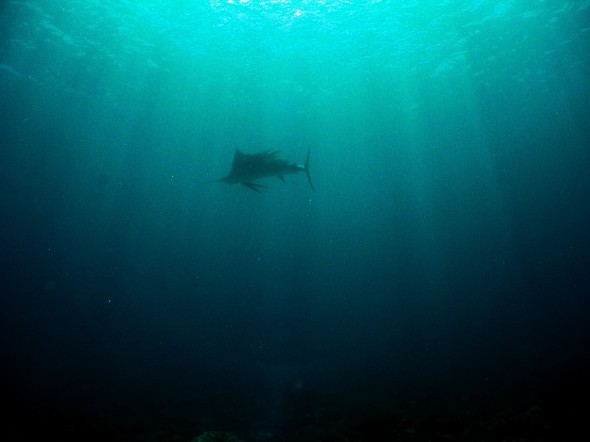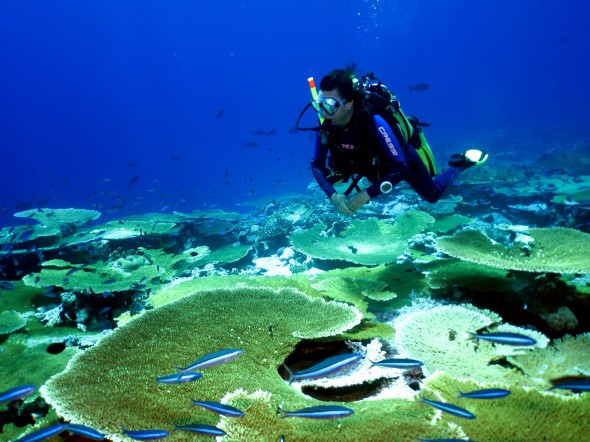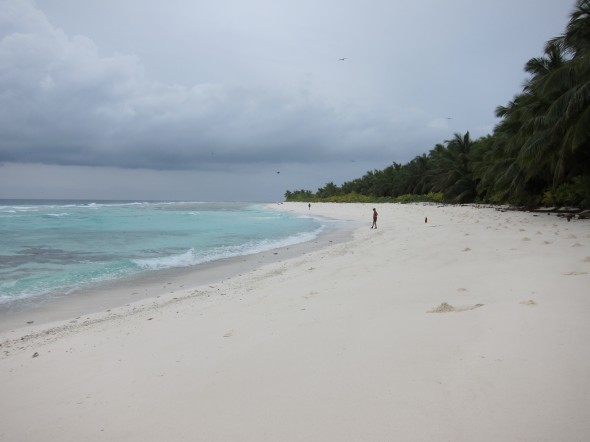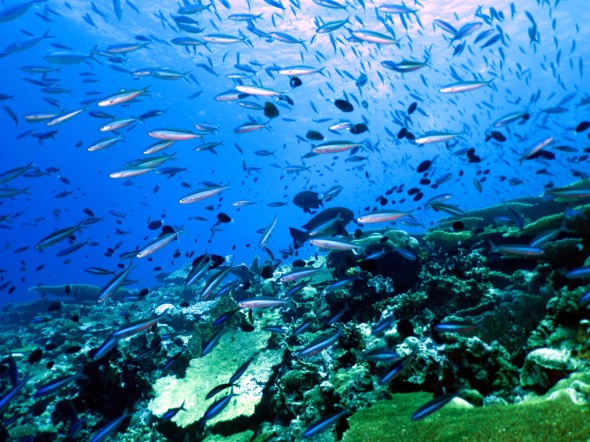A team of researchers has spent the last month in the Chagos archipelago – the first full scientific expedition to the region since it was declared a no-take marine protected area in 2010. In part 2 of our Seamonster interview with Prof. Charles Sheppard we find out more about his latest trip to study the stunning coral reefs of the Chagos, including his top species sighting and the low down on some of the techie gear they used.
 Helen – What was your favourite marine species from this trip?
Helen – What was your favourite marine species from this trip?
Charles – For me the magic of the place is the huge number and abundance of species forming that wonderful, interlocking web of life that you see, and which you now cant see in most parts of the world. The most marvellous school of rainbow runners would be nothing if not set against the backdrop of thriving corals on a vibrant reef.
Perhaps the rarest species this trip for me, is a photograph of a 6 feet long sailfish that I happened to look up and see drifting by.
This fish is extremely fast when it wants to be, and what it was doing just loitering beside me I have no idea! But luckily I had my camera with me, admittedly all set up wrong and with the wrong lens for this shot (I was doing more close up stuff at the time) but I managed a lucky one.
Helen – A new piece of kit your team used was BRUV? What is BRUV and what did it show you?
Charles – This equipment is a frame carrying a pair of high definition video cameras set up to capture synchronised stereo images, with an ability to measure size of fish as well as their numbers. It can be deployed with or without bags of bait to attract fish, depending on objectives.
The scientists who did this work brought eight sets and managed to deploy them over 200 times at various depths including depths far too deep for divers, and on both those atolls where we have our diver transects as well as on offshore banks which are being explored for the first time.
They are planning to come back with similar equipment again and with a different kind which will do pelagic work too. This work is all designed to determine and analyse fish results, including abundance results, in ways that we have not done before.
Remember that Chagos has become one of the world reference sites: what we have in Chagos can be used as a sort of baseline comparison to other areas of the world. This is a great method to extend that.
Keep reading to find out the truth behind “Danger Island” and to take a look at some more stunning photographs from the Chagos.
Helen – Some team members visited Danger Island – is it really that dangerous?
 Charles – We really don’t know why Danger island has got its name! There is nothing dangerous on it, and, like all islands which were never exploited in days of coconut plantations, it is packed with birds. But it would have been big enough, presumably, to have been planted, so my guess is that the danger comes from landing on it.
Charles – We really don’t know why Danger island has got its name! There is nothing dangerous on it, and, like all islands which were never exploited in days of coconut plantations, it is packed with birds. But it would have been big enough, presumably, to have been planted, so my guess is that the danger comes from landing on it.
It experiences swell probably all the time, and it has no natural or easy landing place. It experiences under-tows and landing on it is never easy. It would be too easy, in fact, to come to grief trying to land on it. Maybe that is why it got its name.
Find out more about the latest Chagos science expedition at the Chagos Conservation Trust website.




Leave a Reply